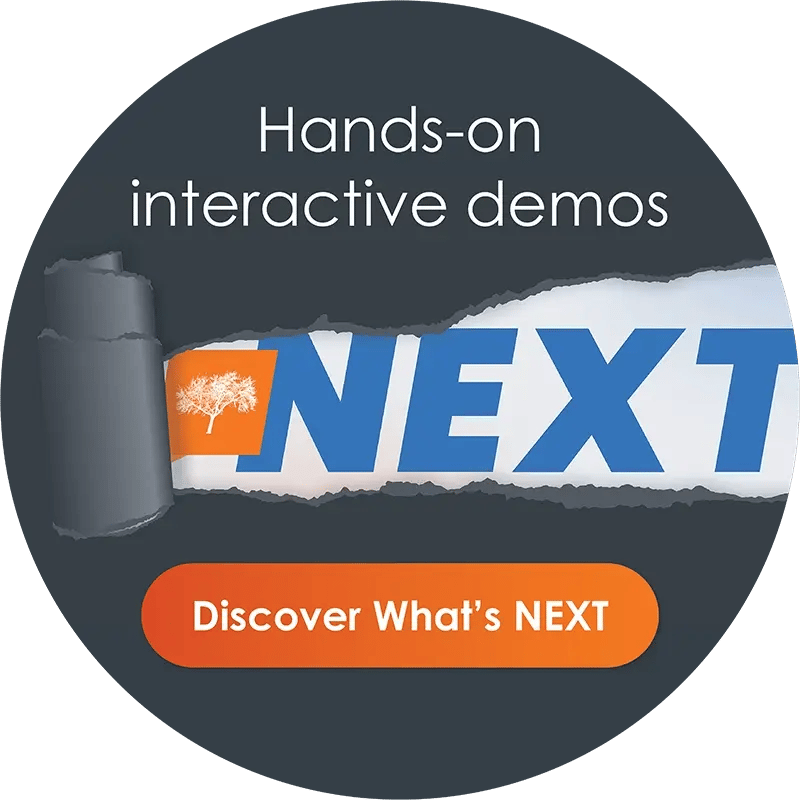The Role of EHR in Value-Based Care for Senior Living Providers

In today's rapidly evolving healthcare landscape, the shift from volume-driven services to value-based care is transforming how senior living communities deliver and manage care. At the heart of this transformation lies the power of data, more specifically, electronic health records (EHRs). For senior living providers, the effective use of EHR systems has become not only a cornerstone of clinical care but also a key driver in improving patient outcomes, enhancing resident experiences, and optimizing operational efficiency.
Here, we’ll explore the critical role EHRs play in supporting value-based care models within senior living communities, and how purpose-built software solutions can empower providers to meet the growing expectations of residents, families, and payers alike.
What Value-Based Care Means in a Senior Living Context
Value-based care represents a shift away from traditional fee-for-service models toward a healthcare approach focused on outcomes, quality, and cost-effectiveness. In the context of senior living, this means prioritizing preventative care, reducing hospital readmissions, managing chronic conditions effectively, and ensuring each resident's health and well-being is continuously monitored and supported.
For senior living providers, value-based care requires a more holistic and coordinated approach that addresses not only medical needs but also emotional, social, and behavioral health factors. This approach aligns incentives with resident outcomes, encouraging staff collaboration, proactive care planning, and stronger partnerships with healthcare providers.
By embracing value-based care, senior living communities can improve resident satisfaction and quality of life while demonstrating measurable results to payers and partners. It also positions providers to participate in evolving value-based payment models, helping to ensure long-term sustainability in an increasingly competitive healthcare environment.
Challenges Senior Living Providers Face When Transitioning to Value-Based Models
Transitioning from fee-for-service to value-based care is a significant shift for many senior living providers. The benefits of this model are clear, including improved outcomes, better resident and patient engagement, and potential cost savings. However, the path to effective implementation is often complex. EHRs are a critical enabler of value-based care, but clinicians frequently encounter several challenges throughout the transition, especially as they work to determine the best type of EHR to suit their needs. Common challenges include:
- Data Integration Across Patient Care Settings: Coordinating with hospitals, primary care providers, and specialists requires seamless data sharing. Many senior living communities struggle with fragmented systems that don’t easily communicate with external partners.
- Limited Interoperability: Without an interoperable EHR, providers face difficulty exchanging patient health information in real-time, which is essential for coordinated and proactive care.
- Lack of Standardized Metrics: Value-based care relies on tracking quality of care metrics and outcomes. Senior living providers often lack access to EHR tools that measure and report on these metrics in a meaningful way.
- Workflow Disruption: Transitioning to new care models and technologies can be disruptive. Staff members must adapt to new processes, documentation requirements, and roles within a more collaborative and data-driven care team.
- Compliance and Privacy Concerns: Managing sensitive resident data while maintaining compliance with HIPAA and other regulations becomes increasingly complex as data sharing expands.
- Resource Constraints: Smaller or non-clinical senior living communities may lack the financial and human resources to invest in robust EHR platforms or dedicate teams to change management.
Understanding these challenges is the first step toward overcoming them. With the right EHR solution, designed specifically for senior living and built to support value-based care, providers can streamline their transition, improve care outcomes, and thrive in a more collaborative healthcare ecosystem.
How a Modern EHR Enables Value-Based Care Success
To thrive in a value-based care landscape, senior living providers need digital tools that go beyond basic data capture. A modern EHR system plays a pivotal role in enabling success by supporting proactive, transparent, and outcome-driven care. Purpose-built EHRs for senior care communities help transform clinical workflows, improve care coordination, and provide the insights necessary to meet the demands of value-based models, among other benefits. Here's how they do it:
Real-Time Clinical Monitoring and Early Intervention
One of the most significant advantages of a modern EHR is the ability to monitor residents' health in real time. By capturing vital signs, behavioral changes, fall risks, and medication adherence in a centralized system, care teams are alerted to early warning signs of decline. This proactive monitoring allows caregivers to intervene sooner, helping to prevent avoidable hospitalizations, manage chronic conditions more effectively, and enhance overall resident well-being.
Coordinated, Interdisciplinary Care Planning
Value-based care thrives on teamwork. A modern EHR works with your other electronic records like EMR and EMAR to coordinate care by integrating input from nursing, therapy, dietary, social work, and other disciplines into a single, resident-centered care plan. Shared access to real-time information promotes better collaboration across care teams and ensures that everyone involved in a resident’s care is aligned on goals and interventions, leading to more personalized and effective outcomes.
Outcome Documentation and Quality Measure Tracking
To succeed in value-based contracts and partnerships, providers must demonstrate the impact of their care. Advanced EHR platforms simplify this by enabling automatic documentation of key outcomes and tracking of standardized quality measures such as fall rates, medication and other medical errors, hospital readmissions, and resident satisfaction. With built-in dashboards and reporting tools, senior living providers can easily analyze performance trends and provide evidence of high-quality, value-focused care.
Integration Across Systems and Stakeholders
In a value-based ecosystem, information flow doesn’t stop at the community’s front door. A modern EHR integrates with external health systems, pharmacies, labs, payers, and referral partners to support seamless transitions of care. This interoperability ensures critical resident information follows them across settings, reducing redundancy, improving clinical decision-making, and bolstering communication with hospitals and primary care providers, all of which are essential for delivering coordinated, cost-effective care.
Example Scenarios: EHR-Supported Value-Based Interventions
A modern EHR is more than just a data repository. It’s an intelligent, real-time tool that empowers senior living providers to deliver proactive, coordinated, and resident-centered care. By surfacing insights and enabling timely interventions, EHRs play a direct role in improving outcomes and reducing preventable incidents that drive up healthcare costs. Below are scenarios that illustrate how EHR-supported interventions can lead to success in value-based care models.
Preventing Hospital Readmission After Rehab
The Scenario: After returning from a short-term rehab stay, a resident’s EHR begins to flag subtle but consistent notes from staff documenting decreased appetite and fluid intake. The system’s built-in clinical alerts recognize a concerning pattern that can be an early sign of dehydration, which is particularly risky for older adults.
The Fix: The care team is notified, and a quick huddle results in an urgent dietitian consultation along with the development of a hydration support plan. With timely intervention in place, the team is able to stabilize the resident's condition and prevent what could have resulted in an emergency hospitalization due to dehydration.
The Value: This proactive, EHR-driven response supports value-based goals by reducing costly hospital readmissions.
Reducing Fall Risk Through Trend Tracking
The Scenario: An EHR with strong documentation and reporting capabilities picks up on an increasing trend of staff noting assistance required for bathroom mobility, particularly during nighttime hours.
The Fix: This clinical data triggers a fall risk review by the clinical team. As a result, the resident's care plan is updated to include regular toileting assistance, grab bar adjustments, and a nighttime safety check routine. An environmental assessment is also conducted to minimize tripping hazards around the living space.
The Value: By acting on the trends identified in the EHR, the care team successfully prevents a fall, avoiding physical injury, potential hospitalization, and the associated costs.
Closing Care Gaps During Transitions
The Scenario: A resident is discharged from a skilled nursing facility back to their assisted living community. The EHR system, integrated with the SNF's records, automatically updates the care team with a detailed care summary. Within this summary, a new medication regimen is flagged, including a recent change in dosage for a heart medication.
The Fix: The EHR sends an alert to the care staff, prompting a medication review and ensuring the new orders are properly administered.
The Value: This seamless communication and alert system helps avoid missed doses or medication errors—a common issue during transitions—and reduces the risk of readmission due to noncompliance or adverse drug events.
Cross-Team Benefits of a Value-Based, EHR-Centered Model
Adopting a modern EHR system that supports value-based care doesn’t just benefit residents, it drives meaningful improvements across every department in a senior living organization. When technology enables collaboration, transparency, and data-driven decision-making, every stakeholder, from leadership to frontline caregivers to families, can contribute to and benefit from a more outcomes-focused model of care. Here's how different teams gain value:
- Administrators: Benefit from improved key performance indicators (KPIs), such as reduced hospital readmissions and enhanced resident satisfaction. Value-based insights also help achieve stronger health outcomes for CMS and state-level quality initiatives, while streamlined documentation makes survey preparation faster and more accurate.
- Clinical Leadership: Gain the tools to identify clinical patterns early, enabling timely interventions that prevent decline. EHR dashboards keep the entire clinical team aligned on care goals, allowing nurse leaders and health directors to standardize best practices and workflows across the community.
- Caregivers: Real-time access to resident information at the point of care helps reduce redundant charting and minimize missed updates. Task alerts and streamlined documentation tools allow caregivers to spend less time chasing paperwork and more time delivering quality, personalized support.
- Marketing and Operations: A strong track record of quality outcomes as reflected in EHR-driven reports can be a powerful differentiator for prospective residents and referral partners. Whether used during tours or in contract negotiations, data-backed quality scores help build trust and showcase the community’s commitment to exceptional care.
- Families and Loved Ones: Transparent access to care updates, combined with the ability to see progress toward personalized health goals, strengthens communication and trust. Families feel more engaged and confident knowing their loved ones are receiving proactive, coordinated, high-quality care.
A value-based, EHR-centered model works best when it benefits everyone from the C-suite to the care floor to the community. With the right technology in place, senior living organizations can foster a culture of collaboration, leading to better outcomes, higher satisfaction, and a stronger reputation in the marketplace.
Features to Look for in an EHR to Support Value-Based Care
Not all EHRs are created equally, especially in the senior living space where care delivery, regulatory expectations, and resident needs are distinct from acute care. To truly align with value-based care principles, providers should look for EHR solutions purpose-built to support proactive, coordinated, and outcome-driven care, avoiding most of the challenges of implementing EHR. The right platform equips staff with real-time insights and workflows that make high-quality, person-centered care both achievable and measurable.
Here are key features to prioritize in an EHR designed to support value-based care in senior living communities:
- Risk-Based Resident Profiling and Alerts: Automatically identify residents at higher risk for falls, hospitalization, dehydration, or other adverse events, and trigger real-time alerts to enable proactive intervention.
- Customizable Assessments Guided by Evidence-Based Protocols: Tailor assessments to align with your community’s needs while ensuring clinical accuracy and consistency through built-in, research-backed protocols.
- Integrated Care Planning and Task Assignment: Enable interdisciplinary collaboration with care plans that link directly to actionable tasks, ensuring the entire team is on the same page and accountable for resident outcomes.
- Real-Time Dashboards and Outcomes Reporting: Track quality measures, clinical trends, and value-based KPIs at a glance to support leadership decisions, quality improvement efforts, and compliance documentation.
- Role-Based User Access: Ensure each stakeholder has access to the right level of information, keeping sensitive data secure while enhancing transparency and communication.
- Integration with Billing and NAV Systems: Connect clinical outcomes to financial data and reimbursement models, helping to support payer relationships and optimize revenue cycle management under value-based contracts.
- Flexible Mobile Charting: Give staff the tools to document on-the-go using mobile devices or tablets, streamlining workflows and improving patient data accuracy at the point of care.
- HIPAA-Compliant Interoperability Across the Care Continuum: Seamlessly exchange information with hospitals, pharmacies, labs, and other providers to support coordinated care and smooth transitions.
When evaluating EHR platforms for value-based care readiness, usability, interoperability, and customization are key. Investing in the right EHR sets the foundation for meeting both operational goals and resident expectations in today’s increasingly outcomes-focused senior care landscape.
Why Eldermark is Built to Power Value-Based Care Performance
At Eldermark, we understand the unique challenges senior living providers face in delivering high-quality, personalized care while managing evolving reimbursement models and performance expectations. That's why our all-in-one platform is designed from the ground up to support value-based care success across your entire organization.
From the moment a resident expresses interest in your community through ongoing care and outcome tracking, Eldermark connects every step of the journey, seamlessly linking pre-admission processes with clinical documentation, data analytics, billing, CRM, and staff scheduling. This end-to-end visibility enables stronger care coordination, smarter decision-making, and measurable results.
Here’s how Eldermark EHR empowers your team to thrive in a value-based care environment:
- Flags clinical patterns in real time, including changes in vital signs, nutrition, hydration, or mood, so your team can intervene before conditions worsen, reducing unnecessary hospital visits.
- Simplifies monitoring of KPIs, quality metrics, and regulatory benchmarks using intuitive dashboards that give administrators and clinical leaders instant, actionable insights.
- Optimizes documentation workflows to be simple, intuitive, and role-specific, making it easy for caregivers, nurses, and administrators to document accurately and completely while minimizing redundancy.
- Closes the loop between care plans, task execution, and results. Our platform helps you deliver on personalized care goals and track them through to evidence-based outcomes.
- Connects effortlessly with external systems including pharmacies, labs, diagnostic providers, and payers. HIPAA-compliant interoperability ensures the right data reaches the right people at the right time, supporting true continuity of care.
- Combines clinical, operational, and financial tools in one connected system, Eldermark removes silos and creates a more efficient, resident-centered model—from pre-admission to reimbursement.
Eldermark isn’t just an EHR. It’s a comprehensive platform built to help your senior living community succeed in today’s value-based care environment. With our powerful tools, your organization can deliver proactive care, showcase results, and stay ahead in a competitive, quality-driven market.
Ready to Lead in Value-Based Care? Eldermark Can Help.
As the senior living industry shifts toward value-based care, having the right technology isn’t optional. It’s essential. Eldermark’s all-in-one platform is purpose-built to help providers deliver proactive, coordinated, and outcomes-driven care that meets the demands of today and positions your community for the future.
By combining a robust EHR with analytics, billing, CRM, and scheduling, Eldermark streamlines operations while empowering your teams to deliver high-quality, resident-centered care. From real-time clinical alerts and user-friendly documentation to integrated dashboards and seamless interoperability, Eldermark gives you the tools to improve outcomes, increase efficiency, and demonstrate measurable value to families, partners, and payers.
Ready to take the next step? Partner with Eldermark to elevate your approach to value-based care and provide your residents with the personalized, high-quality support they deserve. Schedule a personalized demo today and see how Eldermark can transform your senior living community into a leader in value-based care.



